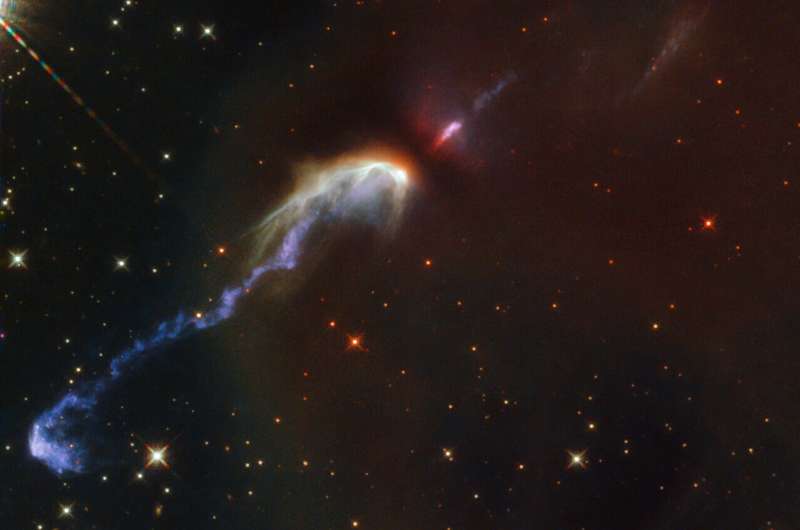Image: Hubble views a baby star's tantrums

Herbig-Haro objects are some of the rarer sights in the night sky, taking the form of thin spindly jets of matter floating among the surrounding gas and stars. The two Herbig-Haro objects cataloged as HH46 and HH47, seen in this image taken with the NASA/ESA Hubble Space Telescope, were spotted in the constellation of Vela (the Sails), at a distance of over 1,400 light-years from Earth. Prior to their discovery in 1977 by the American astronomer R. D. Schwartz, the exact mechanism by which these multi-colored objects formed was unknown.
It had been theorized that a Herbig-Haro object could be a type of reflection nebula—a nebula that does not emit light of its own, but shines because starlight is scattered or reflected off its dust cloud. Another theory suggested that it was a type of shock wave formed when winds emitted from a star interact with the surrounding matter.
The mystery was finally solved when a protostar, unseen in this image, was discovered at the center of the long jets of matter in HH46 and HH47. The outflows of matter, some 10 light-years across, were ejected from the newly born star and violently propelled outwards at speeds of over 93 miles (150 kilometers) per second. Upon reaching the surrounding gas, the collision created the bright shock waves seen here.
Provided by NASA




















